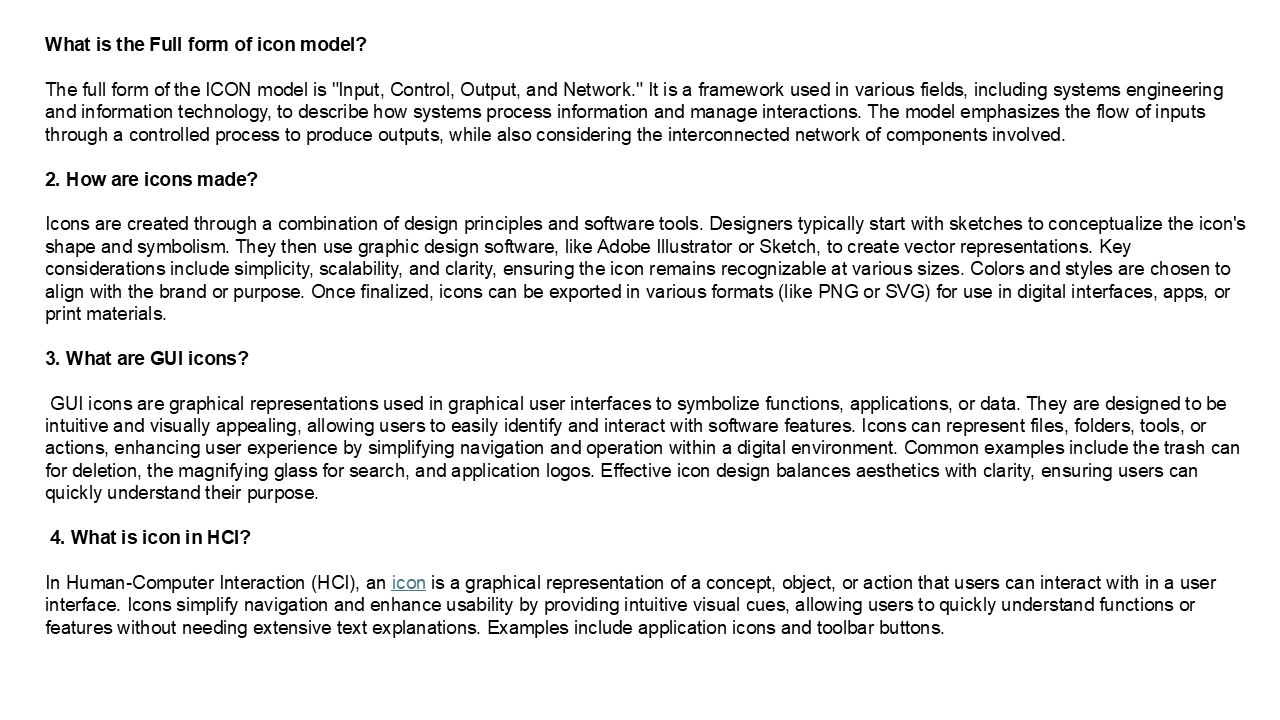The Concept of Icons in Human-Computer Interaction (HCI) - PowerPoint PPT Presentation
Title:
The Concept of Icons in Human-Computer Interaction (HCI)
Description:
Icons, which are graphic representations of functions or objects, simplify complex tasks by providing intuitive visual cues. Their design must balance aesthetic appeal with clear communicative function, ensuring users can swiftly recognize and interpret their meanings. Effective iconography not only reduces cognitive load but also fosters a seamless interaction experience, allowing users to navigate digital environments more efficiently. As HCI continues to evolve, the role of icons remains critical in bridging the gap between human cognition and technological interfaces, shaping user experiences across diverse platforms. – PowerPoint PPT presentation
Number of Views:2
Date added: 20 November 2024
Slides: 3
Provided by:
visualsculptors
Category:
How To, Education & Training
Tags:
Title: The Concept of Icons in Human-Computer Interaction (HCI)
1
- What is the Full form of icon model?
- The full form of the ICON model is "Input,
Control, Output, and Network." It is a framework
used in various fields, including systems
engineering and information technology, to
describe how systems process information and
manage interactions. The model emphasizes the
flow of inputs through a controlled process to
produce outputs, while also considering the
interconnected network of components involved. - 2. How are icons made?
- Icons are created through a combination of design
principles and software tools. Designers
typically start with sketches to conceptualize
the icon's shape and symbolism. They then use
graphic design software, like Adobe Illustrator
or Sketch, to create vector representations. Key
considerations include simplicity, scalability,
and clarity, ensuring the icon remains
recognizable at various sizes. Colors and styles
are chosen to align with the brand or purpose.
Once finalized, icons can be exported in various
formats (like PNG or SVG) for use in digital
interfaces, apps, or print materials. - 3. What are GUI icons?
- GUI icons are graphical representations used in
graphical user interfaces to symbolize functions,
applications, or data. They are designed to be
intuitive and visually appealing, allowing users
to easily identify and interact with software
features. Icons can represent files, folders,
tools, or actions, enhancing user experience by
simplifying navigation and operation within a
digital environment. Common examples include the
trash can for deletion, the magnifying glass for
search, and application logos. Effective icon
design balances aesthetics with clarity, ensuring
users can quickly understand their purpose. - 4. What is icon in HCI?
- In Human-Computer Interaction (HCI), an icon is a
graphical representation of a concept, object, or
action that users can interact with in a user
interface. Icons simplify navigation and enhance
usability by providing intuitive visual cues,
allowing users to quickly understand functions or
features without needing extensive text
explanations. Examples include application icons
and toolbar buttons.
2
5. What is icon system? An icon system refers
to a set of graphical symbols or icons used to
represent concepts, actions, or information in a
user interface or communication medium. These
icons provide a visual shorthand, facilitating
quicker understanding and navigation. Common in
software design, websites, and signage, icon
systems enhance user experience by making
information more accessible and intuitive.
Effective icon systems prioritize clarity,
consistency, and recognizability, allowing users
to easily interpret the intended meaning without
extensive text. Examples include app icons on
smartphones and symbols used in public
transportation signage. Visit
VS Website See more Blog































